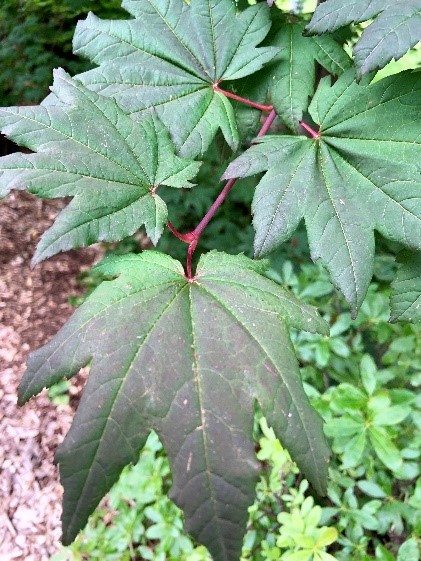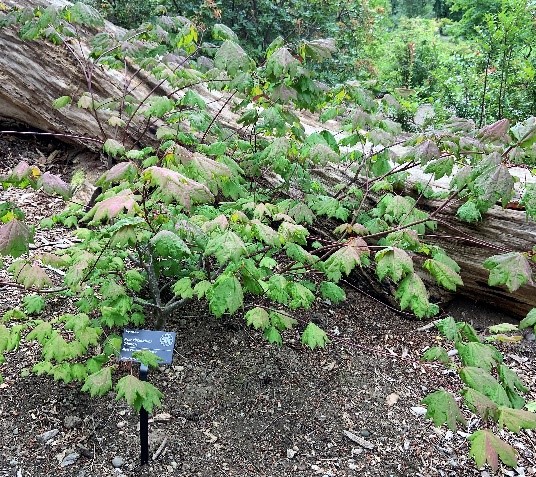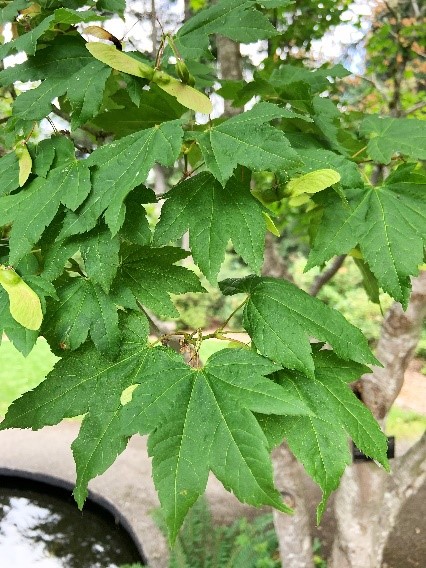Many people are familiar with Washington’s versatile native vine maple, Acer circinatum, which is popular in both cultivated and natural environments. This handsome species is desired for its dramatic colors and tolerance of sun and shade making an excellent ornamental, especially prized for outstanding fall color. Interesting enough to make a good specimen tree, they also do well as the understory to conifers much as they do in nature.
Given the wide variety of shapes, sizes, and colors observed in the wild, and the popularity of the tree in landscaping, it is not surprising that several cultivars of Acer circinatum are now available in nurseries. These cultivars have been propagated vegetatively from naturally occurring variations found in the wild. The beauty of a cultivar is that you always know what you are going to get (they are all identical to the original plant). Accordingly, while you still enjoy the benefits of a native plant, you can now buy a vine maple that will have the specific shape, size, and color that you want. The Smith Mossman garden features a native vine maple right next to the water feature and 15 different cultivars throughout the garden. The cultivars vary in foliage color (yellow, burgundy, green), colored bark (red, green, yellow) and size (2 feet tall up to 18 feet tall).
Maple Valley has close ties to the vine maple as the city was once known as Vine Maple Valley. The area was settled in 1879 by three men who were improving a trail and brought their families in. When a name for a future community was proposed, the names Vine Maple Valley and Maple Ridge were suggested. A vote was taken by writing the names on slips of paper and placing them in a hat. Vine Maple Valley won by 2/3, but the word “vine” was later cut by the post office because it made the name too long.

‘Burgundy Jewel’ 
‘Plum Passion’ 
Native Vine Maple
